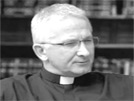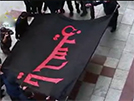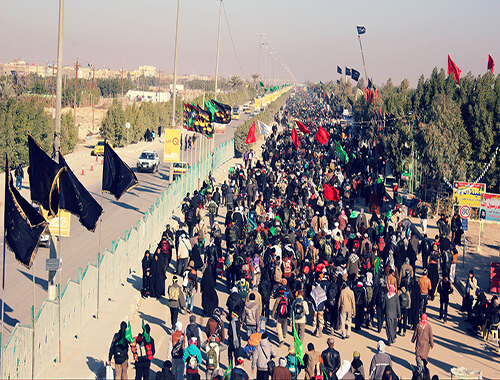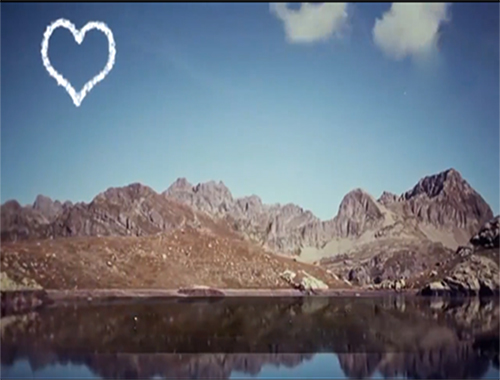The manner of Performing Tawaf
- Details
- Hits: 2569
The manner of Performing Tawaf
According to the Imamiyyah and Hanbali schools, the purpose or niyyah must be specified in every tawaf; but according to the Maliki, Shafi`i and Hanbali schools, a general niyyah for the Hajj is
sufficient and no separate niyyah for tawaf is required. (al‑Jawahir, Fiqh al‑Sunnah) As pointed out earlier, niyyah as a motive behind all voluntary actions is an inevitable and necessary matter; as such, debate and controversy regarding it is futile.
Ibn Rushd, in his Bidayat al‑mujahid, writes: "The Sunni legists are in consensus on the opinion that every tawaf whether obligatory or not, begins from the Black Stone (and according to the Fiqh al‑Sunnah ends thereat). The pilgrim, if he can, kisses it, otherwise touches it with his hand. Then, with the Ka'bah on his left, starts moving towards the right to make the seven circumambulations, walking with a moderately fast pace (ramal) during the first three rounds and with an ordinary pace during the last four rounds. (The ramal [4] applies to the tawaf al‑qudum performed on entry into Makkah by the `Umrah and Hajj pilgrim, not one on Hajj al‑tamattu; also no ramal is required of women pilgrims). Then he kisses al‑Rukn al‑Yamani" (the south‑western corner or rukn of the Ka'bah which falls before the one with the Black Stone mounted on it during the anti‑clockwise rounds made during tawaf.‑‑Tr.).
According to the Imamiyyah, there are certain things obligatory (wajib)in tawaf they are as follows:
1. The niyyah, to which reference has already been made.
2. The tawaf should be made on foot, and in case of inability on a mount. Many Imamiyyah fuqaha' do not recognize this requirement and a group of them explicitly permit tawaf on a mount. They cite the precedent of the Prophet (s) who performed tawaf on camelback, according to traditions in al‑Kafi and Man la yahduruhu al faqih.
3. The condition that the tawaf should begin and end at the Black Stone is stated in this manner in many books of fiqh: "The tawaf should be begun at the Black Stone, so that the first part of one's body is in front of the first part of the Black Stone. Then the pilgrim begins moving with the Black Stone on his left, ending the last circumambulation exactly in line with the point where he commenced his first, thus ensuring that the seven rounds are completed without advancing or falling behind a single step or more. The danger of advancing or falling behind necessitates that the first circumambulation should commence at the beginning of the Black Stone; because if begun in front of its middle, one cannot be sure of having advanced or fallen behind some steps; and if one began from its end, then the beginning may not be said to have commenced from the Black Stone ...." and so on and so forth.
The author of the Jawahir al‑kalam makes elaborate critical remarks about this kind of meticulousness, which show his balanced and moderate taste and temperament. This is the substance of what he has to say: "The difficulty and the exasperating haraj (impediment) inherent in realizing such a requirement is not concealed .... To give it consideration is to fall into silly scruples. The debate is similar to the depraved and unseemly musings of madmen. [5] And it has been narrated of the Prophet (s) that he performed tawaf on camelback, and attaining this kind of precision is infeasible when on a mount."
That which can be understood from the remarks of the author of al‑Jawahir is that he agrees with the author of al‑Shara'i`, who confines himself to this statement, without adding another word: "It is obligatory to begin and end the tawaf at the Stone." It means—as is also apparent from his above‑mentioned remarks‑‑that in the opinion of the author of al‑Jawahir it is sufficient to fulfil this condition in the commonly understood sense. Al‑Sayyid al‑Hakim, in al‑Munsik, holds a similar position when he says, "The pilgrim performing tawaf should begin a little before the Stone with the intent of performing what is really obligatory. When he performs in this fashion he knows that he began at the Stone and finished thereat."
4. The Ka'bah must be on the left during tawaf. According to al‑Sayyid al‑Khu'i, it is sufficient to realize this requirement in the commonly understood sense (i.e. without giving scrupulous attention to precision); slight shifts of direction do not matter as long as the movement meets the requirement in the ordinary sense. According to him the only crucial factor is satisfaction of the requirement in its ordinary sense.
5. The Hajar Isma'il must be included in tawaf. That is the circumambulation should be made around it and without entering it, [6] and it should be kept to the left while making the tawaf. Thus if one passes between it and the Ka'bah during tawaf making it fall to his right, the tawaf becomes invalid.
6. The body should be completely out of the Ka'bah (because God saysÙˆ لیطورÙوا بالبیت العتیق which means that tawaf should be made around and so‑outside the Ka'bah, not inside it). Also if one were to walk on its walls or on the protruding part of its walls foundations, the tawaf would be invalid.
7. The tawaf should be performed between the Ka'bah and the rock called Maqam Ibrahim, which is a stone on which Abraham (`a) stood during the building of the Ka'bah.
8. The tawaf should consist of seven rounds, no more no less, Obviously, recognition of these points requires an informed guide to indicate them to the pilgrims.
After finishing tawaf it is obligatory to offer two rak'ah's ofsalat behind the Maqam Ibrahim regardless of the crowd; but if it is not possible, one may offer the prayer in front of it, and if that, too, is not possible, anywhere in al‑Masjid al‑Haram. It is not permissible to begin a second tawaf without performing the two‑rak`ah prayer. If one forgets performing them, it is obligatory on him to return and perform them. But if returning were not feasible, he can offer them wherever he can. This is true of the obligatory tawaf. But if the tawaf were a mustahabb one, he can offer the two rak`ah's wherever he can. (al‑Tadhkirah, al‑Jawahir, al‑Hada'iq)
This shows that the jurists of all the legal schools are in agreement over certain points: the tawaf starts and ends at the Black Stone; the Ka'bah should be on the left during tawaf; the tawaf should be made outside the Ka'bah; seven rounds should be made; kissing the Black Stone and the Rukn is mustahabb. However, they disagree with respect to the permissibility of break between successive rounds of the tawaf. According to the Maliki, Imamiyyah, and Hanbali schools, continuity without break (muwalat) is obligatory. According to the Shafi`i and Hanafi schools, it is sunnah (i.e. mustahabb) to observe muwalat, so if there is a substantial break between the rounds without any excuse, the tawaf is not invalidated. (Fiqh al‑Sunnah)Similarly according to Abu Hanifah, if one leaves off after the fourth round, he must complete his tawaf if he is in Makkah; but if he leaves Makkah, he must compensate it with a blood sacrifice. (al‑Tadhkirah)
The schools disagree with respect to the necessity of the tawaf being undertaken on foot. The Hanafi, Hanbali, and Maliki schools consider it obligatory. According to the Shafi'i school and a group of Imamiyyah scholars it is not obligatory and one may perform tawaf on a mount. Also, they disagree with respect to the two‑rak'ah prayer (rak'atan) after tawaf. According to the Maliki, Hanafi, and Imamiyyah schools, the rak`atan‑‑which is exactly like the daybreak prayer‑‑are obligatory. The Shafi'i and Hanbali schools regard it as mustahabb.











